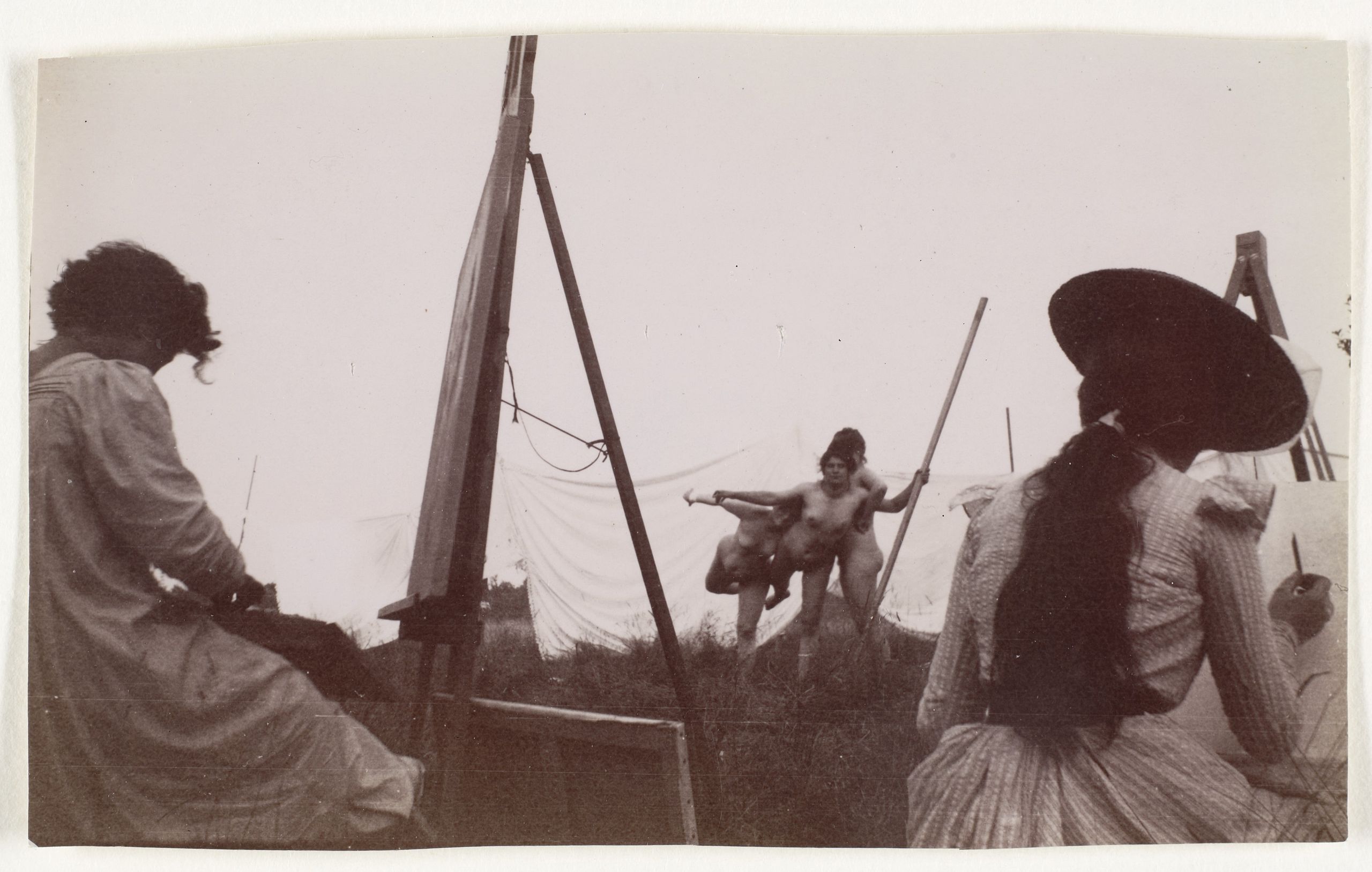Constructing and Using the Portrait Sitting as an Art-Historical Research Object
DOI:
https://doi.org/10.58519/aesthinv.v6i2.16887Keywords:
portraiture, portrait sitting, twentieth century, National Portrait Gallery, modelling, ontology engineering, databaseAbstract
Portraiture is said to have evolved from a collaborative social practice to an artist-centric one. I challenge this view by focusing on the portrait sitting. I develop a portrait-sitting ontology, and a portrait-sitting database. I do so with reference to works in London's National Portrait Gallery, because the gallery features noteworthy sitters, leading to rich interpersonal exchanges during sittings. An approach from my portrait-sitting database shows the contributions of sitters to portrait production, calls attention to shared social and cultural ideas behind particular types of portrait production, and supports new interpretations of portraits and new periodisations of portraiture.
Downloads
References
Barber, Noel, ed. 1964. Conversations with Painters. London: Collins.
Barlow, Paul. 1997. “Facing the past and present: the National Portrait Gallery and the search for ‘authentic portraiture’.” In Portraiture: Facing the Subject, edited by Joanna Woodall. Manchester: Manchester University Press.
Bell, Clive. 1916. Art. London: Chatto & Windus.
Berger, John. (1967) 2016. “No More Portraits.” In Landscapes: John Berger on Art, edited by Tom Overton. London / New York: Verso.
Berthoud, Roger. 1982. Graham Sutherland: A Biography. London: Faber & Faber.
Blackett-Ord, Carol. n.d. “Sir Edward Sharpey-Schafer.” https://www.npg.org.uk/collections/search/portraitExtended/mw02003/.
Cayzer, Elizabeth. 1999. Changing Perceptions: Milestones in Twentieth-Century British Portraiture. Brighton / Portland: The Alpha Press.
Cohen, Paula Marantz. 2008. “On the Death of Portraiture.” Yale Review 91 (3): 62–72.
Cooper, Tarnya, ed. 2014. A Portrait of Britain. London: National Portrait Gallery.
Eaker, Adam. 2018. “The Scene of the Sitting in Early Modern England.” Association for Art History 41 (4): 650–679.
Epstein, Jacob. 1955. Epstein: An Autobiography. Hulton Press.
Flanders, Julia, and Fotis Jannidis. 2016. “Data Modeling in a Digital Humanities Context.” https://juliaflanders.files.wordpress.com/2016/08/flanders_jannidis_data_modelin%60g.pdf.
Gage, John. 1993. “Saving Faces.” Art History 16 (4): 663–668.
Gibson, Robin. 1978. 20th Century Portraits. Exhibition held at the NPG Exhibition Rooms, London, 9 June - 17 September 1978. London: National Portrait Gallery.
Gruber, Thomas. 1995. “Toward Principles for the Design of Ontologies used for Knowledge Sharing.” International Journal of Human-Computer Studies 43 (5-6): 907–928.
Heath, Elizabeth. n.d. “Benjamin Waugh.” https://www.npg.org.uk/collections/search/portraitExtended/mw06631.
Holmes, Charles. 1936. Self and Partners (Mostly Self): being the Reminiscences of C J Holmes. Constable.
Kanter, Dawn. 2023. “Supporting material for ‘Constructing and Using the Portrait Sitting as an Art-Historical Research Object’.” https://doi.org/10.21954/ou.rd.c.6790776.
Lynton, Norbert. 2000. “Portraits from a Pluralist Century.” In Painting the Century: 101 Portrait Masterpieces 1900-2000, edited by Robin Gibson.
Exhibition held at the NPG, London, 26 October 2000 - 4 February 2001. London: National Portrait Gallery.
Mooney, Amy. 2020. “Regarding the Portrait.” https://www.terraamericanart.org/events/event/lecture-series-regarding-the-portrait/.
National Portrait Gallery. 2018. “Collections Development Policy.” https://www.npg.org.uk/about/corporate/gallery-policies/collections-development-policy.
. n.d. “Commissioning Portraits.” https://www.npg.org.uk/collections/new/commissioning-portraits/the-commissioning-process/.
. n.d. “Gallery History.” https://www.npg.org.uk/about/organisation/history.
. n.d. “Winston Churchill.” https://www.npg.org.uk/collections/search/portrait/mw07206.
Pointon, Marcia. 1993. Hanging the Head: Portraiture and Social Formation in Eighteenth-Century England. New Haven / London: Yale University Press.
Rosenthal, Angela. 1997. “She’s got the look! Eighteenth-century female portrait painters and the psychology of a potentially ‘dangerous employment’.” In Portraiture: Facing the Subject, edited by Joanna Woodall. Manchester: Manchester University Press.
Schama, Simon. 2015. The Face of Britain: The Nation Through its Portraits. New York, NY: Viking.
Simon, Robin. 1987. The portrait in Britain and America: with a biographical dictionary of portrait painters, 1680-1914. Oxford: Phaidon.
Spalding, Frances. 1991. “The Modern Face 1918-1960.” In The British Portrait, 1660-1960, edited by Roy Strong. Woodbridge, Suffolk: Antique Collectors’ Club.
Spicer-Simson, Theodore. 1962. A Collector of Characters: Reminiscences of Theodore Spicer-Simson. University of Miami Press.
Tate. 2010. “Frederick Etchells The Big Girl c.1912: Display Caption.” https://www.tate.org.uk/art/artworks/etchells-the-big-girl-t00192.
Woodall, Joanna, ed. 1997. Portraiture: Facing the Subject. Manchester: Manchester University Press.
Downloads
Published
Issue
Section
License
Copyright (c) 2023 Dawn Kanter

This work is licensed under a Creative Commons Attribution 4.0 International License.
Authors who publish with this journal agree to the following terms:
Authors retain copyright and grant the journal right of first publication with the work simultaneously licensed under a Creative Commons Attribution License that allows others to share the work with an acknowledgement of the work's authorship and initial publication in this journal. Note: up to volume 4 issue 1, an incorrect copyright line appears in the PDFs of the articles.
Authors are able to enter into separate, additional contractual arrangements for the non-exclusive distribution of the journal's published version of the work (e.g., post it to an institutional repository or publish it in a book), with an acknowledgement of its initial publication in this journal.
Authors are permitted and encouraged to post their work online (e.g., in institutional repositories or on their website) prior to and during the submission process, as it can lead to productive exchanges, as well as earlier and greater citation of published work (See The Effect of Open Access).






